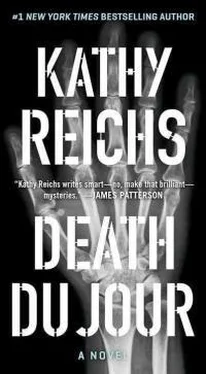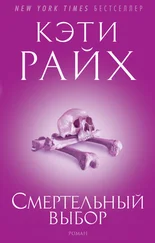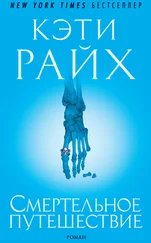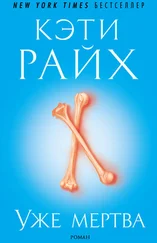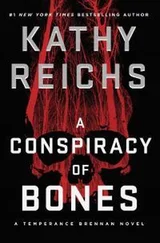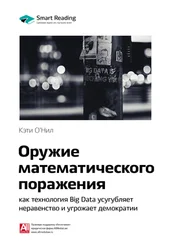I followed Father Ménard down a long, poorly lit hallway into a small study. Here the air smelled of old paper and schoolhouse paste. A crucifix loomed over a desk so large I wondered how they’d gotten it through the door. Dark oak paneling rose almost to the ceiling. Statues stared down from the room’s upper edge, faces somber as the figure on the crucifix.
Father Ménard took one of two wooden chairs facing the desk, gestured me to the other. The swish of his cassock. The click of his beads. For a moment I was back at St. Barnabas. In Father’s office. In trouble again. Stop it, Brennan. You’re over forty, a professional. A forensic anthropologist. These people called you because they need your expertise.
The priest retrieved a leather-bound volume from the desktop, opened it to a page with a green ribbon marker, and positioned the book between us. He took a deep breath, pursed his lips, and exhaled through his nose.
I was familiar with the diagram. A grid with rows divided into rectangular plots, some with numbers, some with names. We’d spent hours poring over it the day before, comparing the descriptions and records for the graves with their positions on the grid. Then we’d paced it all off, marking exact locations.
Sister Élisabeth Nicolet was supposed to be in the second row from the church’s north wall, third plot from the west end. Right next to Mother Aurélie. But she wasn’t. Nor was Aurélie where she should have been.
I pointed to a grave in the same quadrant, but several rows down and to the right. “O.K. Raphael seems to be there.” Then down the row. “And Agathe, Véronique, Clément, Marthe, and Eléonore. Those are the burials from the 1840s, right?”
“ C’est ça. ”
I moved my finger to the portion of the diagram corresponding to the southwest corner of the church. “And these are the most recent graves. The markers we found are consistent with your records.”
“Yes. Those were the last, just before the church was abandoned.”
“It was closed in 1914.”
“Nineteen fourteen. Yes, 1914.” He had an odd way of repeating words and phrases.
“Élisabeth died in 1888?”
“ C’est ça , 1888. Mère Aurélie in 1894.”
It didn’t make sense. Evidence of the graves should be there. It was clear that artifacts from the 1840 burials remained. A test in that area had produced wood fragments and bits of coffin hardware. In the protected environment inside the church, with that type of soil, I thought the skeletons should be in pretty good shape. So where were Élisabeth and Aurélie?
The old nun shuffled in with a tray of coffee and sandwiches. Steam from the mugs had fogged her glasses, so she moved with short, jerky steps, never lifting her feet from the floor. Father Ménard rose to take the tray.
“ Merci , Sister Bernard. This is very kind. Very kind.”
The nun nodded and shuffled out, not bothering to clear her lenses. I watched her as I helped myself to coffee. Her shoulders were about as broad as my wrist.
“How old is Sister Bernard?” I asked, reaching for a croissant. Salmon salad and wilted lettuce.
“We’re not exactly sure. She was at the convent when I first started coming here as a child, before the war. World War II, that is. Then she went to teach in the foreign missions. She was in Japan for a long time, then Cameroon. We think she’s in her nineties.” He sipped his coffee. A slurper.
“She was born in a small village in the Saguenay, says she joined the order when she was twelve.” Slurp. “Twelve. Records weren’t so good in those days in rural Quebec. Not so good.”
I took a bite of sandwich then rewrapped my fingers around the coffee mug. Delicious warmth.
“Father, are there any other records? Old letters, documents, anything we haven’t looked at?” I wriggled my toes. No sensation.
He gestured to the papers littering the desk, shrugged. “This is everything Sister Julienne gave me. She is the convent archivist, you know.”
“Yes.”
Sister Julienne and I had spoken and corresponded at length. It was she who had initially contacted me about the project. I was intrigued from the outset. This case was very different from my usual forensic work involving the recently dead who end up with the coroner. The archdiocese wanted me to exhume and analyze the remains of a saint. Well, she wasn’t really a saint. But that was the point. Élisabeth Nicolet had been proposed for beatification. I was to find her grave and verify that the bones were hers. The saint part was up to the Vatican.
Sister Julienne had assured me that there were good records. All graves in the old church were cataloged and mapped. The last burial had taken place in 1911. The church was abandoned and sealed in 1914 following a fire. A larger one was built to replace it, and the old building was never used again. Closed site. Good documentation. Piece of cake.
So where was Élisabeth Nicolet?
“It might not hurt to ask. Perhaps there’s something Sister Julienne didn’t give you because she thought it unimportant.”
He started to say something, changed his mind. “I’m quite sure she’s given me everything, but I’ll ask. Sister Julienne has spent a great deal of time researching this. A great deal.”
I watched him out the door, finished my croissant, then another. I crossed my legs, tucked my feet under me, and rubbed my toes. Good. Feeling was returning. Sipping my coffee, I lifted a letter from the desk.
I’d read it before. August 4, 1885. Smallpox was out of control in Montreal. Élisabeth Nicolet had written to Bishop Édouard Fabre, pleading that he order vaccinations for parishioners who were well, and use of the civic hospital by those who were infected. The handwriting was precise, the French quaint and outdated.
The Convent Notre-Dame de l’Immaculée-Conception was absolutely silent. My mind drifted. I thought of other exhumations. The policeman in St-Gabriel. In that cemetery the coffins had been stacked three deep. We’d finally found Monsieur Beaupré four graves from his recorded location, bottom position, not top. And there was the man in Winston-Salem who wasn’t in his own coffin. The occupant was a woman in a long floral dress. That had left the cemetery with a double problem. Where was the deceased? And who was the body in the coffin? The family never was able to rebury Grandpa in Poland, and the lawyers were girding for war when I left.
Far off, I heard a bell toll, then, in the corridor, shuffling. The old nun was heading my way.
“ Serviettes ,” she screeched. I jumped, rocketing coffee onto my sleeve. How could so much volume come from so small a person?
“ Merci. ” I reached for the napkins.
She ignored me, closed in, and began scrubbing my sleeve. A tiny hearing aid peeked from her right ear. I could feel her breath and see fine white hairs ringing her chin. She smelled of wool and rose water.
“Eh, voilà . Wash it when you get home. Cold water.”
“Yes, Sister.” Reflex.
Her eyes fell on the letter in my hand. Fortunately, it was coffee-free. She bent close.
“Élisabeth Nicolet was a great woman. A woman of God. Such purity. Such austerity.” Pureté. Austérité . Her French sounded as I imagined Élisabeth’s letters would if spoken.
“Yes, Sister.” I was nine years old again.
“She will be a saint.”
“Yes, Sister. That’s why we’re trying to find her bones. So they can receive proper treatment.” I wasn’t sure just what proper treatment was for a saint, but it sounded right.
I pulled out the diagram and showed it to her. “This is the old church.” I traced the row along the north wall, and pointed to a rectangle. “This is her grave.”
Читать дальше
